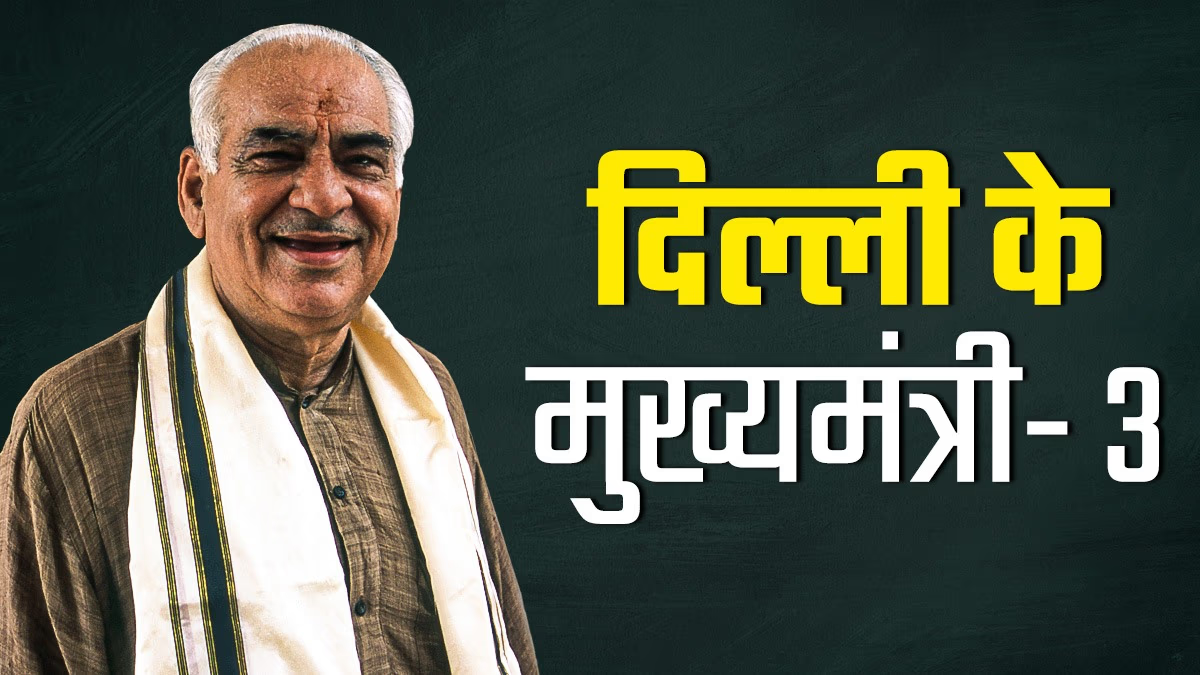Delhi is gearing up for assembly elections next year. Today, let's delve into the story of a remarkable Chief Minister of Delhi who was born in Pakistan and moved to India at the age of 12. Growing up in Delhi, he earned the title 'Lion of Delhi' in the political arena. This is the story of Madan Lal Khurana, who established himself as an exemplary volunteer, a dedicated worker of the Student Council, and a strong pillar of the Jana Sangh-BJP. However, his name became embroiled in the Jain Hawala scandal, leading to his resignation from the CM post after three years.
In 1993, a new assembly was formed in Delhi alongside the assembly elections. During a period of intense Ram Temple movement and public awareness campaigns across the nation with BJP leaders actively participating, the election results brought unprecedented success for BJP in Delhi, leading to Madan Lal Khurana’s appointment as Chief Minister.
A Chief Minister for Delhi After 37 Years
Prior to this, Delhi had an interim assembly in 1952 won by Congress, with Chaudhary Brahm Prakash Yadav as the first CM. Later, in 1955, Sardar Gurmukh Nihal Singh became the second CM. However, following the State Reorganization Commission's recommendations, Delhi ceased to be a Part-C state on November 1, 1956, and the assembly was dissolved. The Delhi assembly was abolished.
A Delhi Metro Council was established for administration, and following the 69th Constitutional Amendment in 1991, Delhi acquired the status of a National Capital Region with special status. In 1993, 37 years after its dissolution, Delhi once again got a Chief Minister.
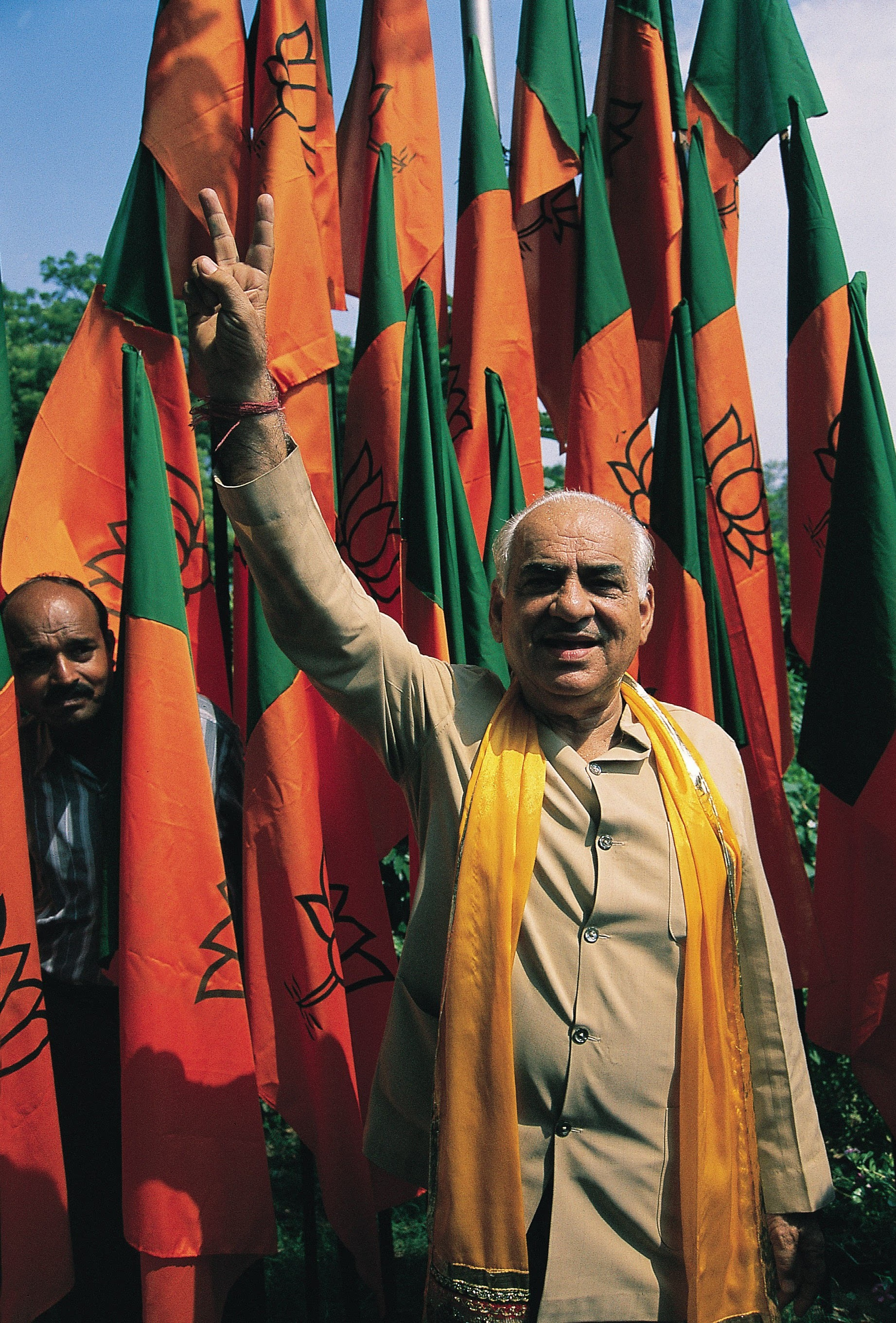
Source: aajtak
Get to Know Madan Lal Khurana...
Madan Lal Khurana was born in 1936 in Lyallpur, which was part of the Punjab Province, now known as Faisalabad in Pakistan's Punjab. In 1947, with the country gaining independence and the partition ensuing, Khurana, then just 12, along with his family had to migrate, ultimately settling in a refugee camp in Kirti Nagar, New Delhi. There, he laid the foundation for his future, pursuing graduation from Kirori Mal College, Delhi, followed by postgraduate studies at Allahabad University. During his career, he taught at a Sangh-run school and eventually became a lecturer at a college.
A Student of Economics With a Growing Interest in Politics
This era marked Khurana's growing interest in politics despite being an Economics student at Allahabad University. Active in political circles, he emerged as the secretary of the Allahabad Student Union in 1959 and the All India Student Council’s general secretary in 1960, gradually building a formidable presence within the organization.
Also Read: The Story of Delhi's Second CM... who initiated a dry law and after whom the seat remained empty for 37 years
Establishing Jana Sangh Roots in Delhi
Amidst a momentary digression from politics, Khurana joined PGDAV College, Delhi, as a teacher alongside Vijay Kumar Malhotra, though the pull of politics remained strong. Eventually, he immersed himself full-time into politics, co-founding Delhi’s Jana Sangh branch with Vijay Kumar Malhotra, Kedar Nath Sahani, and Kanwar Lal Gupta.
Khurana served as the general secretary of the Jana Sangh from 1965 to 1967, engaging in municipal politics, and establishing influence in the Metropolitan Council as Chief Whip, Executive Councillor, and Opposition leader.
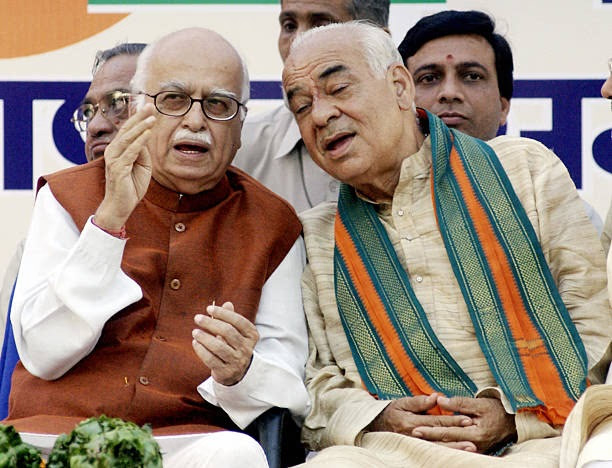
Source: aajtak
Khurana's Rise to Prominence Defeating Maken
With Shyama Prasad Mukherjee founding the Jana Sangh, Khurana emerged as a leading figure in Delhi, forming a notable trio with Kedar Nath Sahani and Vijay Kumar Malhotra to fortify them among Punjabis. In 1967, Madan Lal made a mark by defeating Congress's Om Prakash Maken in the Paharganj Ward elections.
Acclaimed as the 'Lion of Delhi'
The 1980 transition of Jana Sangh into BJP saw severe challenges following Indira Gandhi's assassination in 1984, triggering a factional crisis within Delhi BJP. Khurana stepped up, reanimating the organization through tireless dedication, earning him the esteemed title 'Lion of Delhi' for revitalizing BJP in the capital.
1993 Altered Equilibrium With Congress
Although BJP faced a major defeat in the 1983 Municipal Corporation elections, Khurana's relentless efforts reinstilled BJP’s stronghold in Delhi. When the assembly elections were held at year's end in 1993, under Khurana's leadership, BJP triumphed over Congress resoundingly, especially targeting outer Delhi and trans-Yamuna areas while weaving a strategy to foil Congress in Muslim-majority regions, procuring success.
Leaving the CM Post Within Three Years
Madan Lal Khurana took the oath as Chief Minister on December 2, 1993, after triumphing over Anjali Maken, a former Doordarshan presenter and Congress candidate in the initial assembly election. This historical moment saw a sudden twist, prompting Khurana to vacate the office within three years. He served as Delhi's CM until February 26, 1996, a tenure noted for bringing the metro and accelerating development in the city.
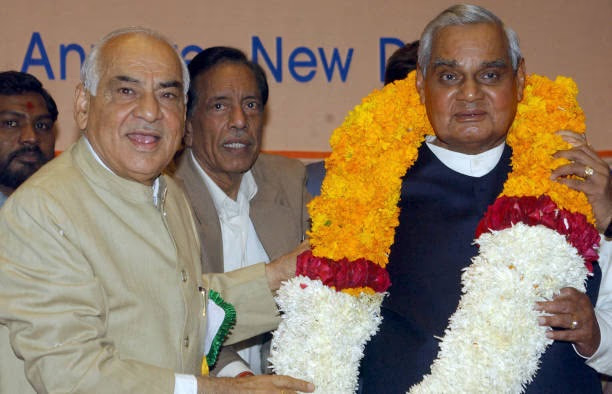
Source: aajtak
Became Governor, Sacrificed for Delhi
In 1998, he was elected as the MP from Delhi Sadar Lok Sabha seat. When the NDA government, led by Atal Bihari Vajpayee, came into power, Khurana became a Union Minister. However, following Vajpayee's government's downfall 13 months later, Khurana resigned from the cabinet in January 1999. After the 2003 Delhi legislature assembly elections and BJP's loss, he resigned as state president.
He subsequently served as Governor of Rajasthan from January 14 to October 28, 2004. During this period, he announced his return to mainstream politics, resigning from the gubernatorial post.
The Reconciliatory Visits to Jaipur
Leadership crises escalated within Delhi BJP during this time, compounded by Congress's consecutive electoral victories under Sheila Dikshit's leadership. Gaps within BJP became starkly visible. A delegation of half a dozen BJP legislators from Delhi visited Jaipur’s Raj Bhavan to brief Khurana and implored him to return to active politics. Nevertheless, post the 2008 elections, BJP suffered defeat.
Also Read: Delhi Assembly Election History: When Kejriwal Paralleled Sheila, BJP Held Just 8 Seats, Congress Was Entirely Vanished
Twice Expelled from BJP in 2005 and 2006
Khurana faced controversies in 2005, critically publicizing then-BJP President Lal Krishna Advani. Expressing public displeasure and discomfort in working alongside Advani led to party action against him; he was suspended on August 20, 2005, on grounds of indiscipline. However, a month later, upon expressing regret, he was reinstated within the party and reassigned responsibilities.
On March 19, 2006, he again lost BJP primary membership following anti-party statements, leading to his termination. He had expressed discontent regarding BJP’s neglect of his issues while fully devoted to Delhi’s progress.
Demise at Age 82
Khurana married Raj Khurana, with two sons and two daughters. In August 2018, their son Vimal passed away due to a heart attack. On October 27, 2018, Madan Lal Khurana also passed at age 82, having suffered a stroke in 2013, leading to prolonged illness. His son Harish served as BJP's spokesperson and currently is a secretary within Delhi BJP.
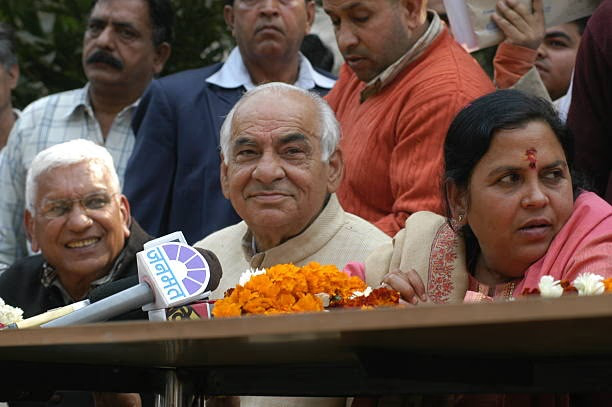
Source: aajtak
For over four decades, from 1960 to 2000, Khurana was a significant figure alongside Kedar Nath Sahani and Vijay Kumar Malhotra in Delhi's political scene, commanding respect among diverse communities.
Why Did Khurana Resign from CM Post?
Janta Party President Subramanian Swamy convened a press conference on June 29, 1993, alleging transgressions by Khurana. He asserted to prove that broker and hawala trader Surendra Jain had funneled two crore rupees to Lal Krishna Advani in 1991. Surendra Jain was linked to a network laundering foreign funds into illegal rupees supporting the Kashmiri separatist organization JKLF.
Also Read: Delhi Assembly Election History: The Election That Concluded Congress's Game and Reinforced AAP's Dominion
Ensnared in the Jain Hawala Scandal
Swamy's claims initially gained little attention; however, just months before the Lok Sabha elections, names from a diary reportedly surfaced, listing initials and alleged figures attributed to various Congress, BJP, and other leaders. The diary hinted at Khurana reputedly receiving three lakhs in 1988, intensifying pressure for his resignation. As allegations mounted, and CBI chargesheets seemed imminent, Lal Krishna Advani resigned from BJP presidency in January 1996, pledging not to contest until exonerated. Shortly after, advised by Advani, Khurana resigned on February 22, 1996, serving two years and 86 days as CM.
A Plea from the President to Madan Lal...
It was a turbulent period around 1983, marked by Congress winning municipal elections in Delhi and BJP emerging as the primary opposition. Appointed as Leader of the Opposition, Madan Lal soon faced 1984's anti-Sikh riots following Indira Gandhi's assassination. At this juncture, President Giani Zail Singh reached out to Khurana requesting his help in ensuring the safety of a Sikh relative. Khurana promptly responded, personally driving to secure the family to a safe locale.

Source: aajtak
How Did the 1993 Election Outcomes Look?
The 1993 elections spanned 70 seats, with BJP claiming victory on 49 seats achieving a 42.80% vote share. Congress, securing second place, captured 14 seats with 34.50% vote share. The Janata Dal secured third place, winning 4 seats with a 12.60% vote share, alongside three independents with a 5.90% vote share. From Shalimar Bagh, BJP's Sahib Singh Verma secured the most significant victory margin of 21,770 votes. Madan Lal Khurana's victory margin from Vishwas Nagar was 6,560 votes. Khurana’s progression to CMs' office followed, although his tenure lasted merely 27 months before culminating in resignation.
